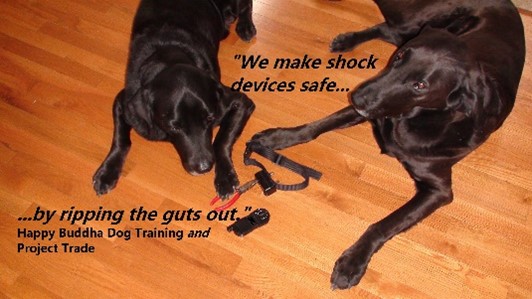Pets and Their People Blog
Fallout is Not Good for You…or Your Pet (Part Two)
A dog cannot be in a relaxed and restful state while simultaneously in a state of fear.
The same is true for humans. You are likely familiar with the survival mechanism often referred to as fight-or-flight. Here’s a brief overview of how that response works:
- The central nervous system (CNS) consists of the parasympathetic nervous system (PNS) and the sympathetic nervous system (SNS).
- The PNS is associated with rest and digest processes, while the SNS is associated with fear and anxiety.
- They work in balance with one another, rather like a teeter-totter; they can’t both be elevated at the same time.

So, getting back to the question we left off with in Part One of this article, what exactly went wrong when ‘Jane Doe’ took her boxer puppy to a trainer who uses “e-collars and treats”? As you’ll recall, that was the first red flag that alerted me that her dog had likely been traumatized, and what may initially have been a training case had become a challenge of trying to repair the fallout and damaged relationship. Here’s why…
Electric shock causes pain, and the expectation of additional shock causes anxiety, triggering the HPA-axis (the interaction between the hypothalamus, pituitary, and adrenal glands). Don’t worry; the terminology is not the point. The point is that an electric shock – or threat of a shock – stimulates the following response:
- In a fraction of a second a dog’s blood pressure, heart rate and respiration increase.
- Blood flows away from the thinking/reasoning region of the brain (prefrontal cortex) and digestive system towards major muscle groups.
- The primitive fear-region of the brain (amygdala) becomes the driver of behavior.
- The body is prepared for action (fight, flight, or other survival instinct), not relaxation.
If “action” is then further punished, that only compounds the matter, since we know from earlier that a dog cannot be in a relaxed, restful state while simultaneously in a state of fear.
As I explained to Jane, any educated professional trainer would understand that shocking a dog into a state of learned helplessness (suppressing behavior) does not teach the dog how to “work through difficult situations.” In fact, the opposite is true. To help our dogs, they first need to know that they can trust us to keep them safe, especially in challenging situations.

Simply put, the only good shock device is one with the guts ripped out.
I would love to end this story with a happy ending, but after providing Jane with information, she decided to put all training on hold.
How is her boxer to receive help?
It is far better to inform pet people in advance before the damage is done. Unfortunately, lack of industry-wide standards, full disclosure, ethics, and regulatory oversight leaves folks like Jane blinded by murky marketing from those who use aversive methods and equipment, sprinkled with a few treats.
About the Author
Daniel H. Antolec, PCT-A, CCBC-KA, CPDT-KA began teaching dogs in 2011 and founded Happy Buddha Dog Training. He teaches dogs in a way that makes it fun for pet stewards and pets alike.

